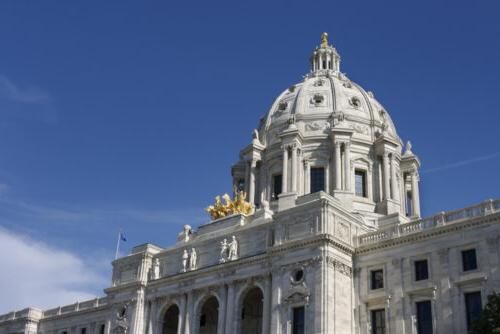(Updated July 15, 2020)
Cities are facing many financial uncertainties in light of the COVID-19 pandemic. The financial market is volatile where municipal debt is now riskier while interest rates on deposits are low. As employers, cities are having to make difficult decisions on layoffs, furloughs, hiring freezes, and/or not bringing on summer seasonal staff. Revenues from local taxes and the operation of municipal facilities, programs, and services are also unpredictable for the next several months. While we acknowledge that there are more questions than answers at this time, the goal of this resource is to provide updates and information that may aid in your financial decision-making process.
Property tax considerations
Property taxpayers are generally required to make payments are made on May 15 and October 15. Counties then generally distribute those tax receipts around June 20, and at the end of November with smaller distributions of late taxes in early July and the end of January.
Under current economic conditions, and possibly due to actions by counties to waive penalties on late property tax payments (under Minn. Stat. § 279.01, subd. 2), there may be a higher rate of late property tax payments that occur after the July distributions to cities. Under current law, those late receipts are not required to be distributed by counties until November. Cities should be aware of two options to request distributions outside of the statutory distribution timeline:
- Interim distributions of property tax receipts ( Stat. § 276.11)
Upon written request of the taxing district, to the extent practicable, the county treasurer shall make partial payments of amounts collected periodically in advance of the next settlement and distribution.
- Interim distributions of property tax receipts ( Stat. § 276.11)
Upon written request of a taxing district, except school districts, the county treasurer shall pay at least 70 percent of the estimated collection within 30 days after the settlement date determined in section 276.09.
—Read more about property taxes and COVID-19 on the Minnesota Department of Revenue’s website.
State aid considerations
LGA payments are made twice a year: July 20 and December 26. This payment structure has two alternatives:
- Early Distribution of LGA due to natural disaster ( Stat. 477A.015)
If a city experiences financial hardship due to a natural disaster, the December payment can be made at the direction of the Commissioner of Public Safety any time after July 20. - Early distribution due to cash-flow challenges ( Stat. 477A.015)
If a city has cash flow challenges, the city can request that the December 26 payment be made at any time after August 15.
Possible state aid reductions
Although somewhat unlikely at this time (April 2020), there is always a possibility that with the rapid worsening of the general fund budget, the state could retroactively reduce LGA payments scheduled for this year through one of two methods:
- If the legislature is in session, the legislature could pass a bill to retroactively cut LGA payments this July and/or December.
- LGA could be “unalloted” (cut) by the governor if these conditions exist:
- The state would have to determine a deficit would occur before the end of the biennium. Currently, the last budget forecast reported a surplus of $1.5 billion.
- The state would have to use the entire budget reserve account, currently funded at $2.3 billion and if a deficit still exists, the Governor could exercise a power known as “unallotment” where he can reduce previously appropriated amounts in the state budget.
Borrowing options
- Tax anticipation certificates ( Stat. § 412.261 (statutory city) Minn. Stat. § 410.325 or (charter city))
Cities may issue certificates of indebtedness in anticipation of the collection of taxes levied for any fund and not yet collected. They may be issued on or after the first day of the year following the annual tax levy and must be payable no later than April 1 of the following year. These “tax anticipation certificates” may be tax-exempt, but in that case are subject to strict rules under federal laws and regulations. Tax anticipation certificates are relatively uncommon, and often reflect financial stress or other unusual factors that require this type of interim borrowing.
- Public emergency certificates ( Stat. § 475.754)
If a city must make extraordinary expenditures due to a natural disaster or other public emergency, and taxes and other funding are insufficient to cover the cost in a given year, the city may authorize the sale of certificates of indebtedness. The certificates must mature within three years, are exempt from public sale requirements, and are not included in the “net debt” of the issuing city. All certificates and interest thereon must be payable from taxes levied within existing limitations or from other available revenue. Nothing in Chapter 475 expressly exempts these certificates from voter approval, but such exemption is implied by the fact that they are authorized only in public emergencies (i.e., the time-consuming election would defeat the purpose of the borrowing).
- Emergency Debt Certificates ( Stat. § 475.755)
If the income of a city is reasonably expected to be reduced below the amount anticipated in its budget when the final property tax levy was certified, and those receipts are insufficient to meet the expenses incurred or to be incurred during the fiscal year, a city can issue certificates of indebtedness that mature within two years or less from the end of that fiscal year. The maximum amount the certificates may be issued for in a fiscal year is the expected reduction and the costs of issuance. The certificates must be repaid by a levy that, according to the Department of Revenue, is not subject to or included in a city’s levy limit.
- Lease-Purchase Authority ( Stat. § 465.71)
As an alternative traditional bond financing, cities are authorized to acquire real or personal property by entering into a “lease-purchase agreement,” under which the seller retains title to the asset until the lease is fully paid. The city, as lessee, pays rent that includes an interest component — lease payments are the functional equivalent of principal and interest on a bond. At the end of the lease term, the city takes title to the subject asset. The key feature of a lease-purchase agreement is that the city must retain the right to terminate the agreement at the end of any fiscal year during its term, by a provision known as a “non-appropriation clause.” This right must not be burdened by penalties so great that they make termination a practical impossibility. Because of this non-appropriation right, a lease is not an “obligation” as defined in Chapter 475 — it is not a promise to pay money at a fixed future date, precisely because a city may choose simply to terminate and make no further payment. A lease-purchase transaction is therefore not subject to voter approval or any other portion of Chapter 475, with one exception: if the amount of the lease exceeds $1 million, that amount is treated as net debt for the purposes of the debt limit under Minn. Stat. § 475.53. More information about this option is available in the Handbook for Minnesota Cities Chapter on Debt and Borrowing.
- Borrowing under the new Municipal Liquidity Facility
In early April, the Federal Reserve announced the creation of the Municipal Liquidity Facility, which will support up to $500 billion in short-term lending to states and local governments. The primary purpose of the Municipal Liquidity Facility is to aid the cash crunch that many states will experience due to congressional action to delay the federal tax filing deadline to July 15th. Eligible uses of proceeds include state and local reductions of tax and other revenues or increases in expenses related to or resulting from the COVID-19 pandemic. The program defines eligible notes that can be acquired under the program as tax anticipation notes (TANs), tax and revenue anticipation notes (TRANs), bond anticipation notes (BANs), and other similar short-term notes issued by an eligible issuer, provided that such notes mature no later than 24 months from the date of issuance. Under the program, no cities in Minnesota are directly eligible to access this program and cities will have to work through the state to be able to access short-term funds. At this time, we are waiting on implementation information from the state and legislative authorization may be needed.
Expenditure Assistance
Federal COVID assistance (Updated July 15, 2020)
Under the federal CARES Act, Minnesota will receive $2.2 billion in federal assistance to cover only those costs that:
- Are necessary expenditures incurred due to the public health emergency with respect to the coronavirus disease 2019 (COVID–19);
- Were not accounted for in the budget most recently approved as of the date of enactment of this section for the state or government; and
- Were incurred during the period that begins on March 1, 2020, and ends on December 30, 2020.






